Are you struggling to measure the effectiveness of your marketing strategies? Here’s something to consider: businesses that track their Key Performance Indicators (KPIs) are 3 times more likely to hit their targets.
This blog offers a comprehensive guide for understanding and implementing 15 top marketing KPIs that could revolutionize your approach to digital marketing. Ready for game-changing insights? Dive in!
What is a KPI?
A KPI, or Key Performance Indicator, is a measurable value that helps businesses track and evaluate their progress towards achieving specific goals. If you are not properly tracking the right KPIs, it’s impossible to truly understand how effective your digital marketing is, or if you need to be making improvements or adjustments.
Why Are KPIs Important to Digital Marketing?
Marketing KPIs are crucial for any digital marketing team. They provide major insight into the effectiveness of various marketing channels and strategies while helping to optimize future campaigns. You should be tracking KPIs for all of your organization’s marketing channels.
The Definition of KPIs for Marketing
Marketing KPIs refers to various calculable measurements used by organizations to gauge performance over time. These metrics enable businesses to evaluate the success of their marketing activities and identify areas requiring improvement.
From marketing teams tracking social media engagement, web traffic and conversion rates, to sales departments monitoring new customer acquisition, everyone relies on KPIs in the marketing department for strategic direction.
Particularly when talking about effective marketing channels, KPIs help determine the effectiveness of campaigns and tactics against business goals. Well-defined marketing KPIs are specific, measurable, achievable, relevant, and timely (SMART).
The SMART Strategy for Marketing KPIs: Setting Goals for Success
Key Performance Indicators (KPIs) are integral to measuring the success of campaigns and strategies. However, it’s crucial to establish KPIs that align with your overall business objectives. This is where the SMART strategy comes into play.
SMART is an acronym that stands for Specific, Memorable, Achievable, Relevant, and Timely. Implementing this strategy ensures that your marketing KPIs are well-defined, focused, and contribute to your business growth. Let’s dive deeper into each element of the SMART strategy:
Specific
When setting marketing KPIs, it’s important to be specific about what you want to achieve. Vague goals lead to confusion and lack of direction.
Aim to define your KPIs with clarity, focusing on the particular outcome you wish to attain. For instance, instead of setting a general goal like “increase website traffic,” a more specific KPI would be: “increase organic website traffic by 20% within the next quarter.”
Memorable
Memorability is often overlooked when it comes to setting important marketing KPIs. However, memorable goals help keep your team aligned and motivated.
Create KPIs that are easy to remember and understand. Use concise language and make sure everyone involved can recite the goals effortlessly. This fosters a shared sense of purpose and commitment towards achieving those KPIs.
Achievable
While ambition is admirable, setting unrealistic KPIs can lead to frustration and demotivation. Ensure your marketing KPIs are attainable, considering factors such as available resources, budget planning, and market conditions.
Evaluate your past performance and analytics to set goals that challenge your team but are still achievable. By setting realistic targets, you increase the chances of success and maintain morale throughout the process.
Relevant
Relevance is crucial when establishing marketing KPIs. Your KPIs should directly contribute to your overall business objectives and provide meaningful insights into digital marketing effectiveness. Align your KPIs with your company’s mission, values, and long-term goals.
For instance, if your goal is to increase brand awareness, a relevant marketing KPI could be “generate 500 social media shares per month to amplify our brand reach.”
Timely
Without a timeline, goals can lose their sense of urgency and fade into the background. Setting a timeline for your important marketing KPIs ensures accountability and helps prevent procrastination.
Establish specific dates or time frames for achieving your goals, whether they are short-term, medium-term, or long-term. This time constraint fosters focus and enables you to gauge your progress effectively.
By employing the SMART strategy, you transform your marketing KPIs from abstract concepts to actionable targets. This approach empowers your sales team to work towards specific objectives, measure progress, and make data-informed decisions.
Remember, the SMART strategy is not a one-time exercise; it should be revisited periodically to adapt to changing market dynamics and ensure your marketing strategies stay aligned with your business goals.
Importance of KPI tracking
Tracking marketing KPIs is like looking at a roadmap while on a journey. KPIs provide quantitative benchmarks, giving you clear insights into your performance metrics and the effectiveness of your marketing.
Without careful tracking of these measurable benchmarks, even the most strategic goals might miss their mark. Businesses use marketing KPIs to understand customer acquisition costs, return on investment (ROI), conversion rates, digital marketing campaign success, and much more; they are vital in aligning operational objectives with business targets.
These marketing metrics guide us by showcasing where improvements are needed or when our strategies prove successful – it’s crucial data analysis that supports informed decision-making for future ad campaigns.
15 of the Best KPIs for Digital Marketing
In digital marketing, there are 15 key performance indicators (KPIs) that can help improve your strategy. These include Customer Acquisition Cost (CAC), Lifetime Value of a Customer (LTV), Return on Investment (ROI), Return on Ad Spend (ROAS), Marketing Qualified Leads (MQL), Sales Qualified Leads (SQL), Follower Growth, and Conversion Rate.
Other important digital marketing KPIs include Website Visitors, Social Media Engagement, Referral Traffic, Net Promoter Score (NPS), Organic Traffic, Event Attendance, and Customer Retention.
1. Customer Acquisition Cost (CAC)

Understanding the Customer Acquisition Cost (CAC) is crucial in determining marketing KPIs and their effectiveness. This KPI measures your marketing cost, the amount you spend to attract each new customer, incorporating all your marketing and sales expenses.
The lower your CAC, the more efficient your strategies are at attracting new customers. It’s an essential profitability metric for any business, as it directly influences how much profit you make per customer. Always aim to keep this number low by optimizing your campaigns and focusing on high-converting channels.
2. Lifetime Value of a Customer (LTV) or Customer Lifetime Value (CLV)

The Lifetime Value of a Customer (LTV) or Customer Lifetime Value (CLV) is a crucial marketing metric that measures the total value a customer brings to your business throughout their relationship with you. It helps you understand how much revenue you can expect from each customer and allows you to make informed decisions about marketing strategies, customer retention efforts, and pricing models.
By calculating Lifetime Value of a Customer/Customer Lifetime Value, you can identify your most valuable customers and focus your marketing dollars on nurturing those relationships to drive long-term profitability for your business.
3. Return on Investment (ROI)
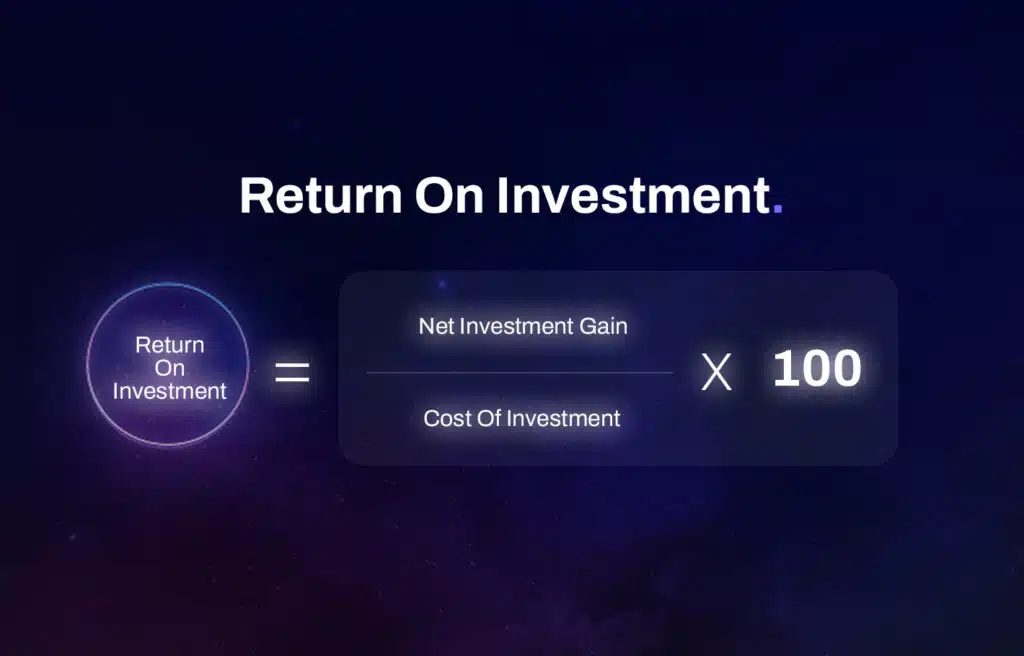
Return on Investment (ROI) is one of the most critical marketing KPIs for measuring the success of your marketing campaigns. It helps you understand how much revenue you’re generating in relation to the amount of money invested.
By calculating ROI, you can assess the effectiveness and profitability of your digital marketing program. To calculate ROI, divide the net profit generated from your campaign by its cost per lead, total and cost per move, and then multiply it by 100 to get a percentage.
A positive marketing ROI often indicates that your marketing strategies are generating more revenue than what you’ve spent, while a negative marketing ROI often means you’re losing money. Monitoring ROI allows you to make data-driven decisions and allocate resources towards high-performing strategies for optimal business growth.
4. Return on Ad Spend (ROAS)

Calculating your Return on Ad Spend (ROAS) is crucial for evaluating the effectiveness and profitability of your paid advertising campaign. ROAS measures the revenue generated from your ads relative to the amount spent on them, giving you a clear picture of how well your ad dollars are being utilized.
By analyzing your ROAS marketing KPIs, you can identify which specific ads or channels are delivering the best results and adjust your strategy accordingly. This marketing KPI allows you to make data-driven decisions and optimize your advertising efforts to maximize return on marketing investment.
5. Marketing Qualified Leads (MQL)
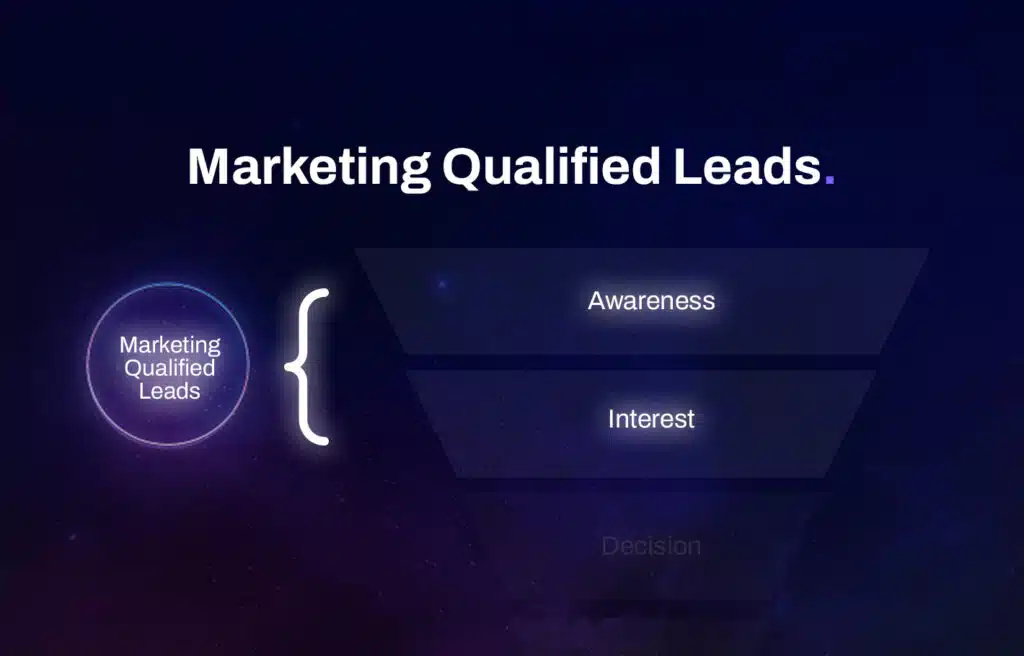
Marketing Qualified Leads (MQL) are potential customers who have shown a strong interest in your product or service. These leads have engaged with your digital marketing in some way, such as filling out a form on your website or downloading a whitepaper.
MQLs are key indicators that someone is ready to transition from being a prospect to becoming a potential customer. By tracking and analyzing a marketing qualified lead (MQL), you can better understand the effectiveness of your marketing and make adjustments to improve your marketing or search engine optimization (SEO) strategy.
6. Sales Qualified Leads (SQL)

SQL are potential customers who have shown a strong interest in your product or service and as a sales qualified lead are more likely to convert into paying customers. These leads have actively engaged with your marketing campaign, demonstrated purchasing intent, and meet specific criteria that indicate they are ready to be contacted by the sales team.
By identifying SQLs, businesses can prioritize their sales efforts and focus on nurturing these high-quality prospects, increasing the chances of closing deals and driving revenue growth.
With effective tracking of lead generation and analysis of lead generation and SQLs, businesses can optimize their marketing strategies to attract more qualified leads and improve overall conversion rates.
7. Follower Growth
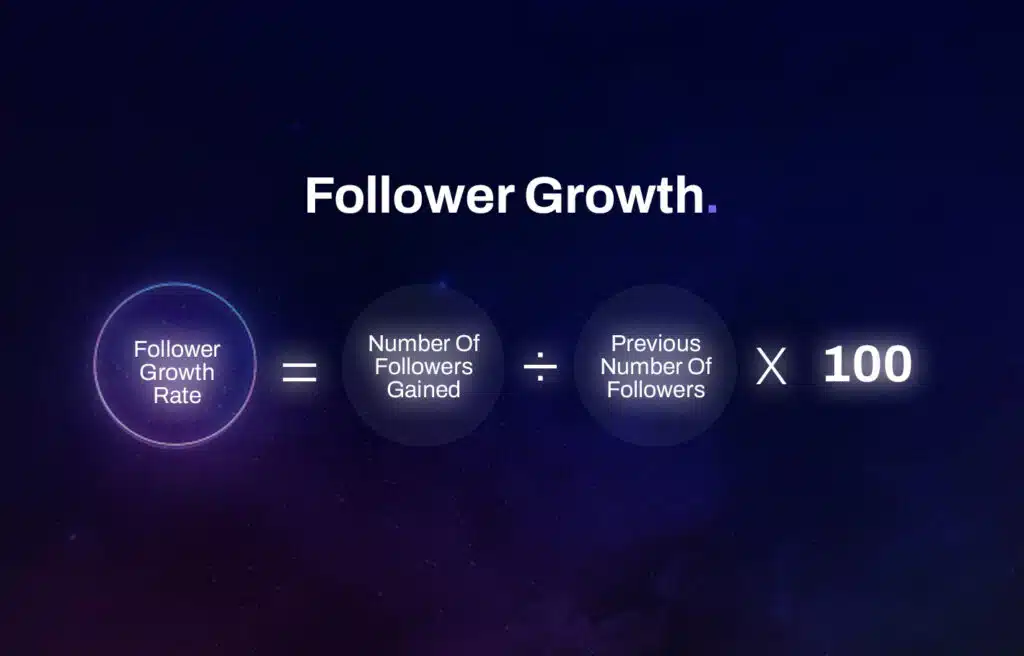
Follower growth is a crucial KPI for digital marketing. It measures the increase in the number of followers or subscribers on social media platforms and email lists. By tracking follower growth, companies can assess the effectiveness of their content and engagement strategies.
A higher rate of follower growth indicates that more people are interested in what a brand or web page has to offer, which can lead to increased visibility, reach, and potential conversions.
To improve follower growth, marketers should focus on creating valuable and relevant content that resonates with their target audience and encourages them to engage with the brand’s online presence. Engaging with followers through comments, likes, shares, and replies can also foster a sense of community and loyalty among existing followers while attracting new ones.
Ultimately, by prioritizing follower growth as a KPI, businesses can enhance their digital marketing and social media efforts to build a strong social media presence.
8. Conversion Rate
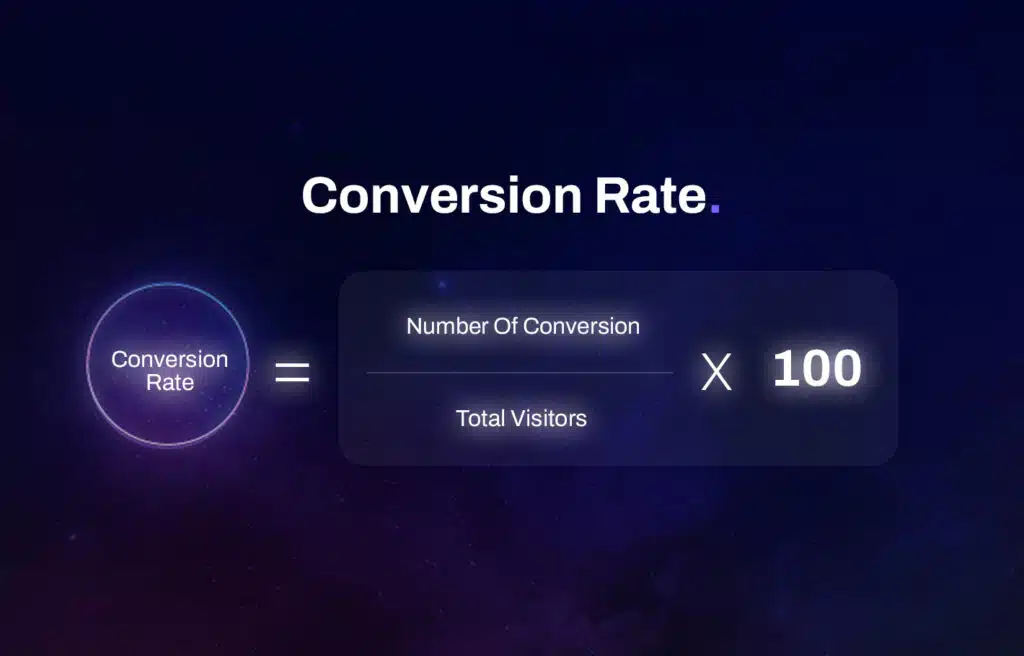
The conversion rate is a crucial key performance indicator (KPI) for any digital marketing campaign. It measures the percentage of website visitors who take a desired action, such as making a purchase or filling out a form.
A high conversion rate indicates that your marketing efforts are effective in driving customer engagement and ultimately generating leads or sales. To improve your conversion rate, focus on optimizing your website design, simplifying the user experience, and creating persuasive call-to-actions.
Monitoring and analyzing this metric can help you identify areas for improvement in your digital strategy and drive better results for your business.
9. Website Visitors

Tracking the number of website visitors is a crucial key performance indicator (KPI) for digital marketing. It shows how effective your marketing strategies are at driving traffic to your website.
By monitoring this metric, you can assess the success of your campaigns and make necessary improvements to increase your online presence. Additionally, tracking website visitors allows you to evaluate the effectiveness of different marketing channel and-specific marketing activities and adjust your strategies accordingly.
This KPI provides valuable insights into the overall performance of your digital marketing efforts and helps you achieve your strategic goals by targeting the right audience and optimizing user experience on different marketing channels on your website.
10. Social Media Engagement

Engaging with your audience on your social media channels is crucial for building brand awareness and driving customer loyalty. By actively interacting with followers, responding to comments, and sharing valuable content, you can cultivate a strong online community that supports and advocates for your brand.
Social media engagement goes beyond just follower count; it encompasses likes, shares, comments, and overall interaction with your social media posts. The more engaged your audience is, the higher the likelihood of them becoming customers and spreading the word about your business.
Don’t underestimate the power of social media marketing and engagement in strengthening your content marketing KPIs and overall strategy.
11. Referral Traffic

Referral traffic is an important Key Performance Indicator (KPI) for digital campaigns. It measures the number of visitors that come to your website from external sources such as social media, other websites, or online directories.
By tracking referral website traffic, you can understand which marketing channels and strategies are driving the most visitors to your blog articles or site. This information allows you to optimize your marketing efforts and allocate resources effectively.
Referral traffic is crucial in evaluating the success of your content marketing plan and identifying opportunities for growth.
12. Net Promoter Score (NPS)
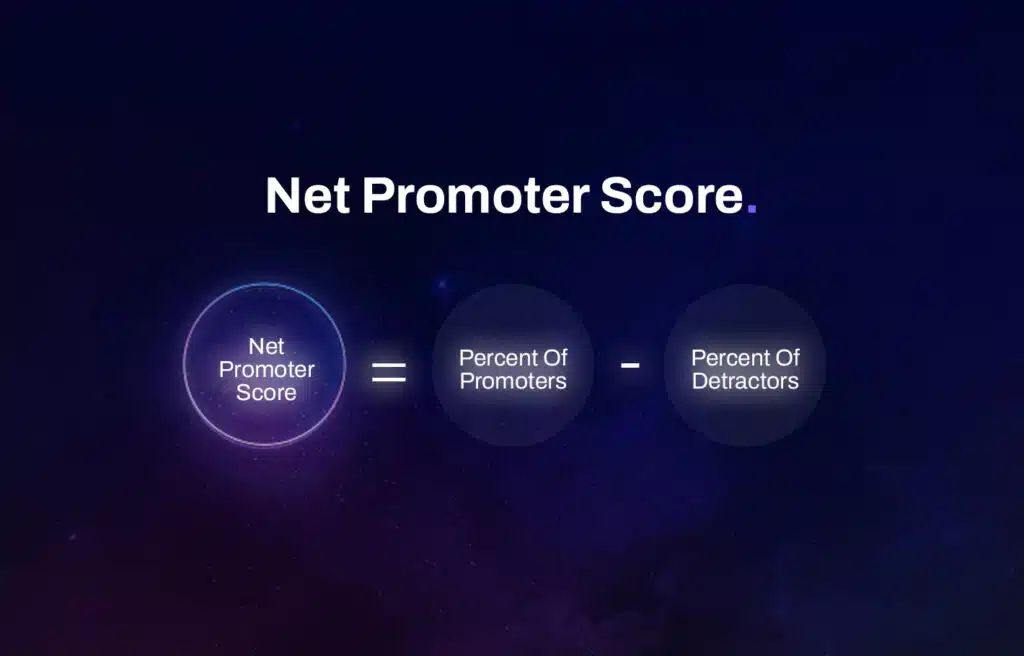
Net Promoter Score (NPS) is a key performance indicator that measures customer satisfaction and loyalty. It helps businesses understand how likely their customers are to recommend their products or services to others.
“On a scale of 0-10, how likely are you to recommend us?” is a simple survey question companies can ask to classify respondents into three categories: promoters, passives, and detractors.
The NPS formula subtracts the percentage of detractors from the percentage of promoters to give an overall score. A higher NPS indicates more satisfied customers and greater potential for organic sales growth, through word-of-mouth recommendations.
13. Organic Traffic

Organic traffic refers to the visitors who come to your website through unpaid search engine results. This is an important KPI for digital marketing because it shows how well your website is performing in terms of attracting users naturally, without any paid advertising.
By monitoring website performance metrics like organic traffic, you can gauge the effectiveness of your SEO strategy and determine if your content strategy is resonating with your target audience. Increasing organic website traffic can lead to higher visibility in search engine rankings and ultimately drive more conversions for your business.
You should also use social media to drive traffic to your website. Using social media to drive traffic can be effective when done properly. Like all other marketing efforts, the organic traffic that comes from your social media accounts should be tracked.
14. Event Attendance

Events provide an excellent opportunity for businesses to connect with their target audience and build brand awareness. Tracking event attendance is a key performance indicator (KPI) that can help measure the effectiveness of your marketing efforts.
By monitoring the number of people attending your events, you can gauge the level of interest in your brand and determine if your marketing activities are resonating with your target market.
Increasing event attendance can lead to higher customer engagement, increased sales opportunities, and ultimately contribute to the overall success of your marketing efforts.
15. Customer Retention
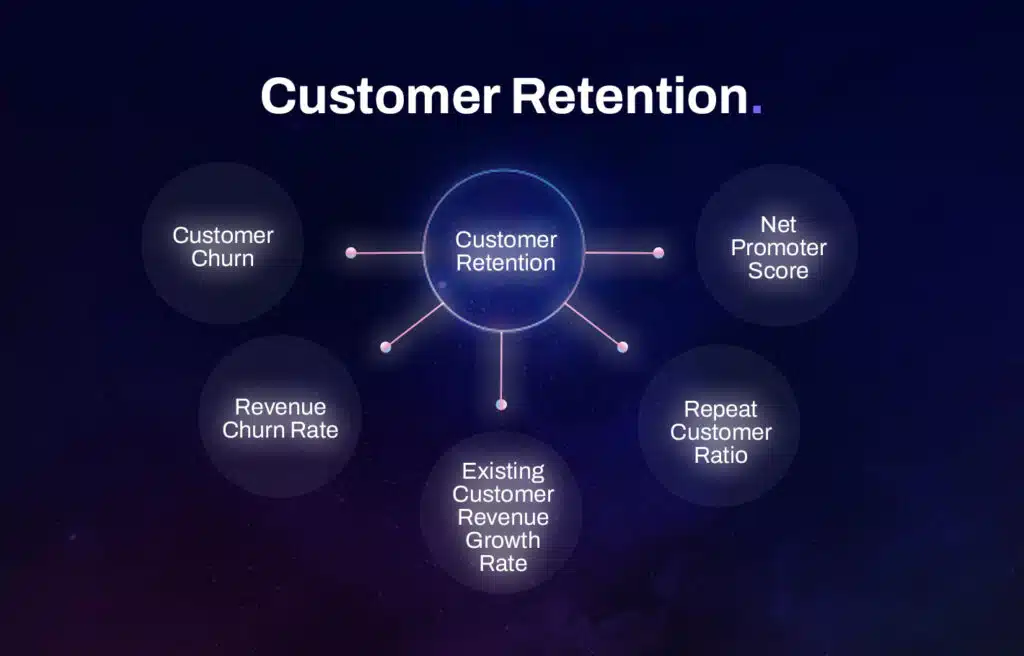
Customer retention is a crucial aspect of any successful marketing strategy. It refers to the ability of a business to retain its existing customers and keep them coming back for repeat purchases.
By focusing on customer retention, companies can build long-term relationships with their customers, increase loyalty, and ultimately grow your sales revenue. To measure customer retention, businesses typically use metrics like customer churn rate or the percentage of customers who stop doing business with them over a given period of time.
To improve customer retention, companies can implement strategies such as personalized communication, loyalty programs, excellent customer service, and continuously delivering value to their customers.
How to Measure and Improve Your KPIs for Marketing Campaigns
To effectively measure the right marketing KPIs and improve your digital marketing strategy, it is important to consider the context, align metrics with business goals, utilize Objectives and Key Results (OKRs), and tackle common challenges head-on.
Importance of Context
Context is key when it comes to measuring and improving your marketing KPIs for campaigns. Without considering the context in which your metrics are being measured, you may not be able to accurately evaluate the effectiveness of your strategies.
By taking into account factors such as industry trends, competitive landscape, and target audience behaviors, you can gain a deeper understanding of how your KPIs align with your overall business goals.
This contextual insight allows you to make informed decisions and adjustments to optimize your marketing activities and drive better results. Remember, context provides the necessary perspective for interpreting and acting upon your performance metrics effectively.
Aligning Metrics with Business Goals
To effectively measure the success of your marketing, it’s crucial to align your metrics with your business goals. By doing so, you can ensure that the KPIs you track are directly tied to what matters most for your organization.
Whether it’s increasing customer acquisition, improving ROI, or boosting conversion rates, aligning metrics with business goals allows you to focus on the specific outcomes that will drive growth and success.
By regularly analyzing these aligned metrics and making data-driven decisions, you can optimize your content strategy and achieve tangible results.
Utilizing Objectives and Key Results (OKRs)
Utilizing Objectives and Key Results (OKRs) is a powerful strategy for measuring and improving your campaigns. OKRs provide a clear framework for setting goals and tracking progress towards those goals.
By defining specific objectives and key results, you can align your marketing budget with your overall business goals. This helps in focusing your resources on the activities that are most likely to drive success.
With OKRs, you can set measurable benchmarks that allow you to track the performance of your email marketing campaigns and initiatives. By regularly monitoring these key results, you can gain valuable insights into what’s working and what needs improvement.
This data-driven approach enables you to make informed decisions about where to allocate resources, optimize campaigns, and maximize ROI.
Implementing OKRs also encourages collaboration between your sales team and marketing team by providing everyone with a shared understanding of what needs to be achieved. It promotes transparency, accountability, and alignment among team members, fostering an environment of continuous improvement.
How to Overcome Common Challenges with Your Marketing Efforts
Marketing strategy campaigns face several common challenges that can hinder the effectiveness of marketing KPI and measurement. Overcoming these challenges is crucial for improving your marketing strategy. Here are some key challenges and strategies to overcome them:
1) Lack of clear objectives
Clearly defining your marketing goals and aligning them with specific KPIs will help you track progress accurately.
2) Inefficient data collection
Invest in reliable data collection tools and ensure that you have access to accurate and up-to-date data for analysis.
3) Inadequate resources
Allocate sufficient resources, including budget, personnel, and technology, to effectively measure and improve your KPIs.
4) Poor data analysis skills
Train your team in data analysis techniques or consider hiring professionals who can analyze the collected data efficiently.
5) Inconsistent reporting
Establish a regular reporting schedule to ensure that progress is tracked consistently across all campaigns and channels.
6) Lack of buy-in from stakeholders
Communicate the importance of tracking KPIs to all stakeholders, ensuring their support and involvement throughout the process.
7) Shifting industry trends
Stay updated on the latest industry trends and adapt your KPIs accordingly to reflect changing consumer behaviors and market dynamics.
8) Overemphasis on vanity metrics
Focus on meaningful metrics directly tied to business outcomes rather than getting caught up in superficial vanity metrics, such as social media likes or page views.
9) Incomplete attribution modeling
Implement a robust attribution model that accurately attributes conversions or sales to specific marketing touchpoints across multiple channels.
10) Failure to iterate and optimize
Continuously monitor your KPIs, identify areas for improvement, and implement changes based on data-driven insights to enhance marketing performance over time.
Final Thoughts: KPIs for Digital Marketing
Understanding and tracking key performance indicators (KPIs) is crucial for improving your digital marketing strategy. By measuring metrics such as customer acquisition cost per lead amount, conversion rate, and social media engagement, you can make data-driven decisions to optimize your marketing strategy.
Remember to align your KPIs with your business goals and overcome any challenges along the way. With a strong focus on KPIs, you’ll be able to boost your marketing effectiveness and ultimately drive better results for your business.



